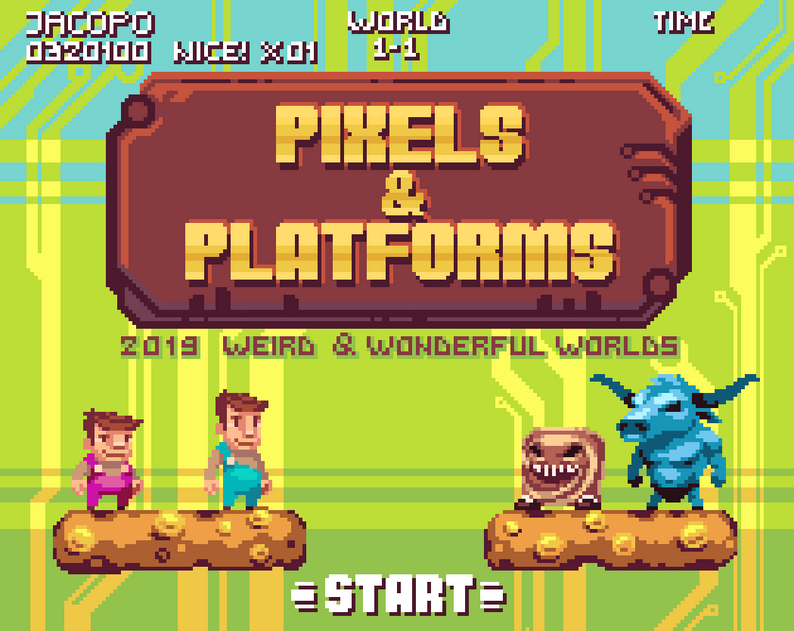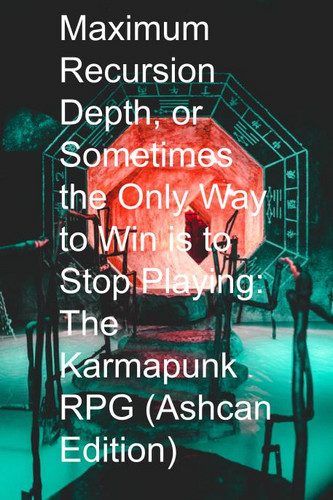Space and Underwater settings and campaigns are hardly novel, but anecdotally, it seems like nobody is really satisfied with the mechanics. Many games with mechanics for this kind of movement are super crunchy attempts at simulation which don't appeal to me, personally, or they're handwave-y and basically just treat movement through those spaces as regular land travel. The latter is generally fine for me, but it would be cool to have some kind of middle ground; an attempt to model this kind of movement in a way that doesn't just exist for the sake of simulation, and isn't super crunchy, and also adds something to the game experience.
Here I outline an idea for how to design a hexcrawl in four dimensions; not just two axes (left/right, forward/backward), but also up/down and moment, or baseline movement (e.g. a school of fish, a massive space fleet, etc.). These ideas have not been tested yet, and there are edge cases I can think of, but hopefully, people will find this idea intriguing.
In addition to managing a hexcrawl, these same mechanics should theoretically be applicable to grid-based combat, or even just as fictional positioning helpers for theater of mind play, but I am primarily describing these mechanics in terms of a hexcrawl.
Finally, I'll also say that this was also somewhat inspired by three-dimensional movement in
Veins of the Earth. While I model three-dimensional space in a very different way here, that may have been the first game I had read that really made me think about how to model space in a game that seemed fun and not overly cumbersome or simulation for the sake of simulation.
A brief statement on the Moment dimension
I'm open to suggestions, but I'm thinking of calling the fourth-dimension "Moment". Taken from the wikipedia article on
Moment:
In physics, a moment is an expression involving the product of a distance and physical quantity, and in this way it accounts for how the physical quantity is located or arranged.
I think it would be perfectly reasonable to stop at three-dimensions; that's already novel and potentially complicated enough. However, I was inspired quite a while ago by nature documentaries, specifically seeing aquatic ecosystems, and how these three-dimensional ecosystems work. A school of fish can be attacked from all sides; birds diving from the sky, other fish and aquatic mammals swooping in from below and all sides, so as a necessary survival mechanism to defend from so many vulnerable positions, they are more or less constantly in motion. This was a major inspiration for my Vortekka campaign setting (
setting,
play report), and also The Jellyfleet and The Choir from Phantasmos (included in my post on
Weird & Wonderful Places; even then I was thinking of these moving groups as an alternative to geopolitics per se).
In this case, the fourth-dimension is like the relationship between different objects over time as a function of their baseline movement. This will be elaborated upon further when I get into the mechanics of this system, but it will hopefully be not as complicated as that may make it sound. The point of a good model is to be parsimonious- to condense more information into fewer arguments, and I think Moment is potentially a good way to do that here.
Extrapolating this idea to intelligent species, you'd have a fundamentally different kind of "geo"-politics, really more of a "moment"-politics, defined less so by static geographical locations (or statically-keyed hexes on your hex map), and instead by nomadic groups and their Moment-level relationship to other nomadic groups or geographical features. I suppose this is also true with nomadic land-dwelling species, in which case I could see this being useful for a land-dwelling campaign with nomadic cultures, or for a pre-civilization or post-apocalyptic setting, independent of the mechanics for a three-dimensional hexcrawl, and in fact, the mechanics described below, despite the labels, can be used independently.
For reasons which should also be more clear when I describe the mechanics, this Moment mechanic could also be a fun way to do chases and races.
Three-dimensional Hexcrawl
Let's start with how to model the third dimension in a hexcrawl; up/down. First, you need to decide on how many "levels" of up and down there are, in the same way that you need to decide on the dimensions of your hexcrawl in two-dimensions. I don't love the idea of treating three-dimensional space as planar, but I don't see a better way around it that isn't mechanically or logistically much more complicated (i.e. requiring some kind of physical diorama or digital tool). The volume of each hexagonal prism can be arbitrary in the same way that the area of a hexagon in a hexcrawl can be arbitrary, as long as it's internally consistent (I guess that's just common sense...). That being said, I'll still be referring to these prisms as hexes, since we're treating the third-dimension as planar, and therefore in effect, it will still be represented as hexes across multiple planes.
So for the sake of simplicity, let's say we've decided there are three levels. In that case, key each hex on your hex map three times, or alternatively take your hex map, and triplicate it. When you key your dungeon, you'll have the normal two-dimensions and level. If one unit of movement is moving from one hex to an adjacent hex, movement between levels can also be treated as one unit. So objects can move either to any adjacent hex as normal, or move one level up or down. Diagonal movements, like going up or down a level and also moving planarly adjacent, should probably be two units of movement, which is about as close as I can think of to model this in actual three-dimensions off-hand without making it massively more complicated.
If you are keying the hexcrawl arbitrarily, there's really nothing more to it than that. However, if there is supposed to be some internal consistency, such as geography, environment, celestial bodies, etc., then you'll want to keep in mind not just these relationships from hex to hex on each plane, but also between planes.
So when prepping a three-dimensional hexcrawl, as already stated, you can decide whether you want to design a separate hex map for each level and lay them all out, or have a single map with multiple keys depending on level (*I also describe another approach further below). I think the latter is probably more practical, but you could potentially have your cake and eat it too by having a separate hex map for each level on a semi-translucent sheet and physically layering them or splitting them as needed (or digitally using layers in some design tool).
If you are using a single map with multiple keys, then next to any object/group token, you should have a die alongside them, with the number on the die representing their level. I would worry that this might get overly complicated in hex or grid combat, although still doable, but for a hexcrawl, my hope is that this will not be too complicated, especially if the only token is the party.
I hesitate to suggest this because I think it would probably just overcomplicate things, but you could also imagine pivoting the hexcrawl, so that for instance moving forward/backward or left/right on a given hex map is actually up/down, and the planes represent whichever axis is being superseded. This could work particularly well if e.g. your hexcrawl is intended to relatively linearly model rising from the depths of the abyss back up to the surface, or being pulled by a gravitational force.
This kind of pivot could also be a useful way to visually/physically model the hexcrawl in multiple dimensions without needing a separate hex map for each level; where you have three hex maps representing the intersections of all axes (e.g. left/right, forward/backward; up/down, forward/backward; left/right, up/down). So even if you had ten levels, you should only need three hex maps, if I have thought this through correctly. Talk about parsimony! Even so, personally, I think this would be more complicated than just one hex map with multiple keys, but for another group, it might be preferable, or after testing it might be that this is a better approach.
Four-dimensional Hexcrawl
Despite the label, one could choose to use this Moment dimension independent of up/down, but for the sake of continuity, I will describe this as the fourth-dimension.
In an abyssal, aquatic, or maybe even an outer space hexcrawl, as discussed at the beginning, objects are generally not remaining in place, and so you need to represent their "moment". As with the spatial dimensions, we can measure moment in arbitrary but internally consistent units, like 5 ft for general movement on a grid. As with three-dimensional level, we can use a die next to a token on a hex map to represent its moment (presumably in a different color or size than the one used for three-dimensional level), or as a feature on a key in addition to whatever text is associated with that key. In other words, this is the baseline movement for the token, or key, before any groups have made any active movements.
So if the party have a moment of 1, and the hex in front of the party is of a school of fish people also with a moment of 1, there is no difference between their baseline movements, so if the party move one hex forward on their next turn, they'll reach the hex with the school of fish. On the other hand, if the school of fish has a moment of 2, then the GM would move the key for that school of fish people at the beginning of the turn before the party has made their active movement.
Admittedly, it could get complicated having to move all of these keys around on your hex map, especially if you're doing it behind the scenes (the players are unaware of what is in any given hex far enough afield), but intuitively I think this moment dimension, or relative distance or baseline movement, is both easier than manually accounting for the active movements of all keys containing nomadic groups, and also just a fun way to mechanically reinforce that this hexcrawl is not static. And also, I think it's ok if certain keys "slip off" the hex map. There's plenty of fish in the sea ;), maybe this is how you treat wandering monsters / random encounters.
You could potentially imagine the keys as being placed on hex chips, like settlers of catan, and that would make it easier to move and keep track of the keys with moments greater or lesser than the party, although that has some shortcomings as well (such as the players being able to see you moving keys tells them that such keys exist...). I think this key shuffling would be the hardest part, unless it were automated digitally, but not necessarily impossible.



